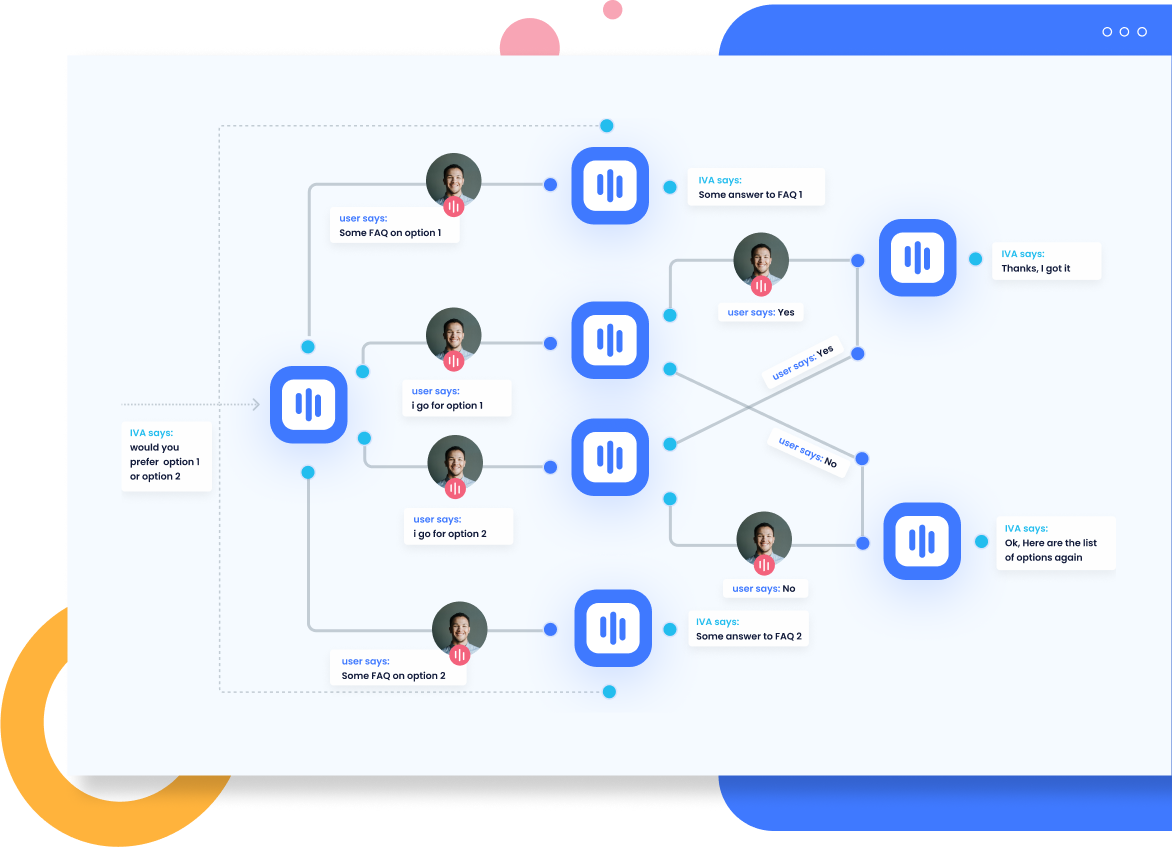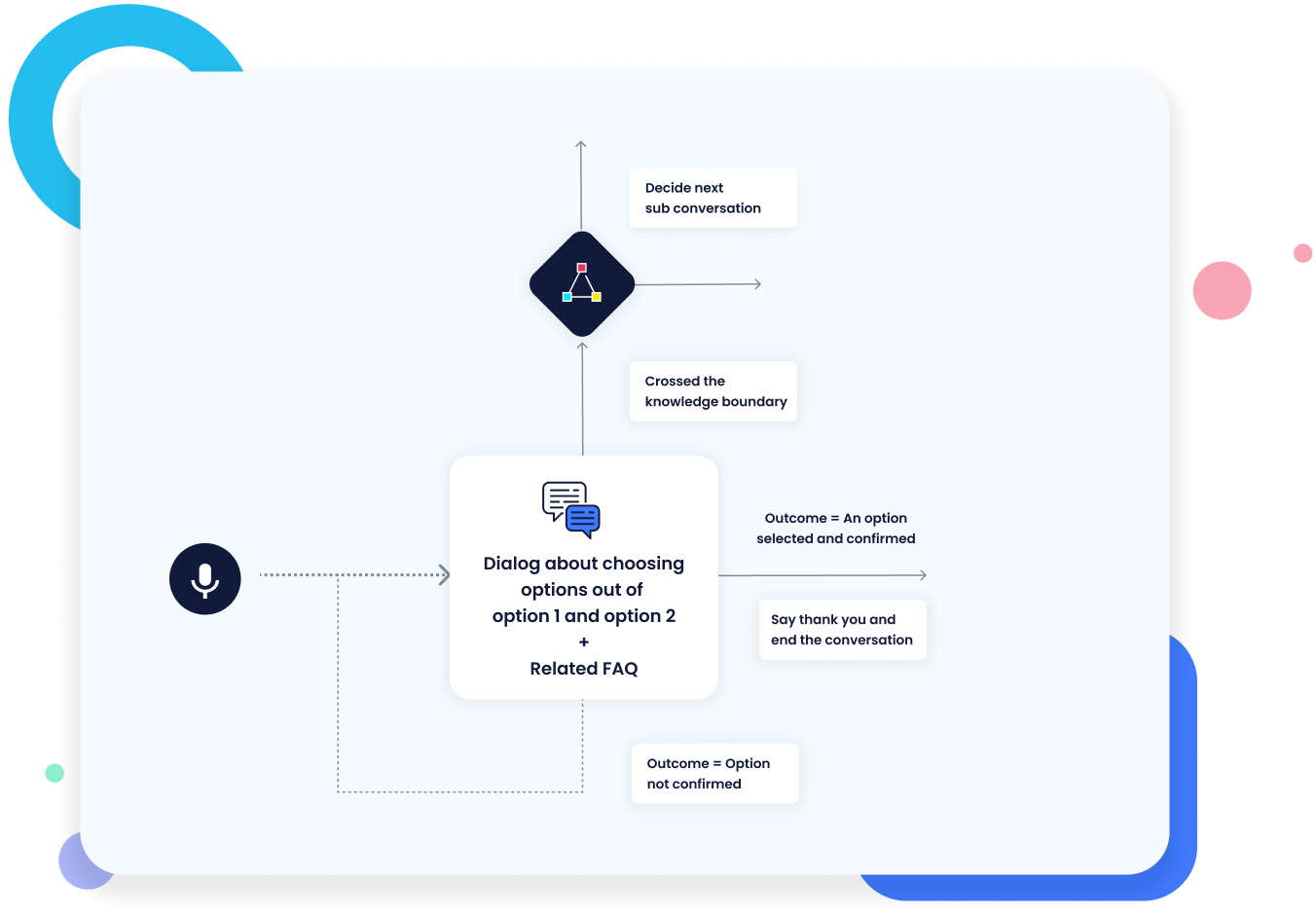See our latest developments Know More

See our latest developments Know More

Almost all the conversational AI platforms out there in the marketplace use one core principle for modelling a conversation flow. We call it “Response to Response” modelling. That means, every node of the conversation flow corresponds to a particular response that the AI provides.

In the example shown here on the right, the blue nodes represent the responses from the AI system and the yellow squares represent the user. The blue nodes of the AI system generate a response depending on what the user says; the arrows define possible transitions. It doesn’t matter whether you manually define transition or you define it via some training data: you have to deal with the same complexity. If you are an experienced conversational AI developer, you know how complex the visualization becomes when handling a reasonable real-life scenario.
Our platform is developed with a vision to reduce the conversation flow modelling complexity and hence developers can focus on the ideas that really add value. This is the key to building high quality conversational AI experiences.

We introduce a novel way of building conversational AIs with our patent-pending approach. We call it the “3 Block Concept”, which allows developers to model a conversation flow in terms of micro-conversations rather than a “response to response” approach. Micro-conversations have limited scope (or a knowledge/fact boundary) and a goal. Upon achieving that goal, or by crossing the knowledge boundary, the AI engine moves to the next micro-conversation. If we model conversation flows based on this analogy, we end up having fewer nodes than in a conventional design. Each node represents a piece of the conversation and more importantly provides the functionality for a multi-turn dialogue.
Now, let us look at how we can model the previous example with our approach.
One of the key differences you would notice is that the transitions are taking place based on the outcomes of a micro-conversation, rather than transitions taking place based on what the user says at a given time. The node count in the conversation flow is therefore reduced significantly. This approach abstracts out the key stages of real-life conversations that you are going to automate and the flow is represented completely based on such stages. Hence, converting a real-life process into a conversational AI automation becomes simpler and more straightforward, enhancing the productivity of the developer.
The 3 Block Concept suggests a novel framework to build conversational AI's. According to the 3 Block Concept, a conversational scenario can be represented in a space of micro conversations. We have observed that any micro conversation can be categorized into one of three categories depending on their conversational nature and nature of goals achieved at the end.
